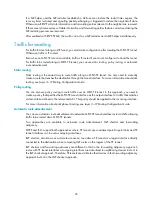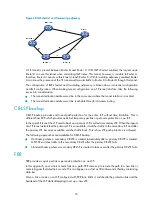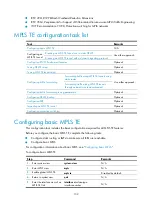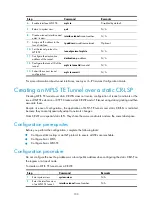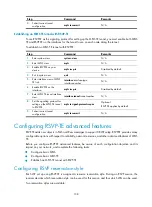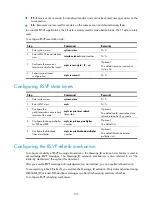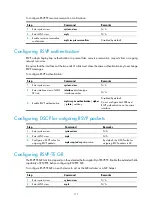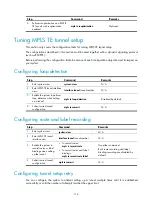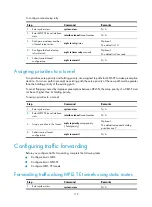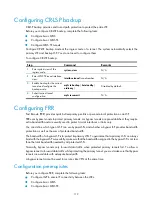
108
Step Command
Remarks
4.
Submit current tunnel
configuration.
mpls te commit
N/A
Establishing an MPLS TE tunnel with RSVP-TE
To use RSVP-TE as the signaling protocol for setting up the MPLS TE tunnel, you must enable both MPLS
TE and RSVP-TE on the interfaces for the tunnel to use on each node along the tunnel.
To establish an MPLS TE tunnel with RSVP-TE:
Step Command
Remarks
1.
Enter system view.
system-view
N/A
2.
Enter MPLS view.
mpls
N/A
3.
Enable RSVP-TE on your
device.
mpls rsvp-te
Disabled by default.
4.
Exit to system view.
quit
N/A
5.
Enter interface view of MPLS
TE link.
interface
interface-type
interface-number
N/A
6.
Enable RSVP-TE on the
interface.
mpls rsvp-te
Disabled by default.
7.
Enter MPLS TE tunnel interface
view.
interface tunnel
tunnel-number
N/A
8.
Set the signaling protocol for
setting up the MPLS TE tunnel
to RSVP-TE.
mpls te signal-protocol rsvp-te
Optional.
RSVP-TE applies by default.
9.
Submit current tunnel
configuration.
mpls te commit
N/A
Configuring RSVP-TE advanced features
RSVP-TE adds new objects in Path and Resv messages to support CR-LSP setup. RSVP-TE provides many
configurable options with respect to reliability, network resources, and other advanced features of MPLS
TE.
Before you configure RSVP-TE advanced features, be aware of each configuration objective and its
impact on your network, and complete the following tasks:
•
Configure basic MPLS
•
Configure basic MPLS TE
•
Establish an MPLS TE tunnel with RSVP-TE
Configuring RSVP reservation style
Each LSP set up using RSVP-TE is assigned a resource reservation style. During an RSVP session, the
receiver decides which reservation style can be used for this session and thus which LSPs can be used.
Two reservation styles are available:





